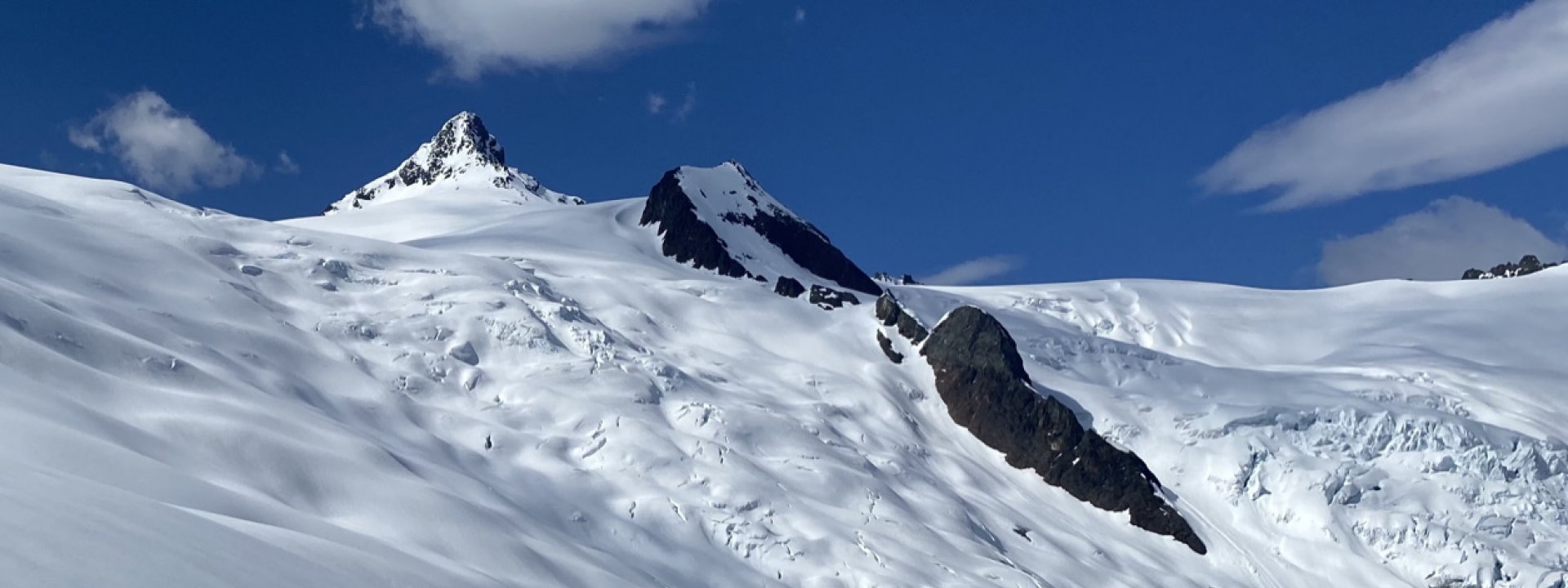Plan an Adventure
Similar Trips

3 or 4 day outing

In early season the Sulphide Glacier is also the perfect ski mountaineering objective with long, wide-open skiing on an impressive, but not too intimidating, glacier.
The Sulphide Glacier is one of Mount Shuksan’s largest glaciers which slowly ramps up to the final summit pyramid. The climbing on the summit pyramid involves steep snow and moderate rock which takes you to the tiny perch of the true summit. The views from here include Mt. Baker to the West, the Canadian Peaks to the North, and on a clear day Rainier to the South.
For many people, the Sulphide Glacier climb gives them their first glimpse of the true potential of the climbs in the North Cascades. A large percentage of the climbers that visit Washington State are first drawn to the bigger volcano climbs such as Mt. Rainier and Mt. Baker, often unaware of the spectacular climbing that is found elsewhere in the state. Mount Shuksan offers the beautiful glacier climbing that the Cascades are so famous for plus a nice dose of technical climbing on a classic summit pyramid.
The climb of Mount Shuksan via the Sulphide Glacier is typically done as either a three or four-day outing, depending on how much additional training the climbers want to include.
Day One starts down in the forest and slowly climbs into the alpine and eventually camp at either the 5,400’ camp in the saddle or just below the glacier at 5,700’.
Day Two will start off with the necessary training for the ascent of Mount Shuksan. This will include self arrest, glacier travel, and cramponing skills. The amount of training will depend on the previous experience of the climbers.
After the training, you will move your camp to high camp at 6,500’. This move is a relatively short move but puts the team into position for a shorter summit day. It also gives you a great vantage point to watch the sunset over Mt. Baker.
The climbing on summit day the following morning will start with a moderate glacial climb up to the final summit pyramid. The standard route follows the central gully and typically involves mixed snow and rock climbing.
For those climbers with a little bit of rock climbing experience, the Southeast Ridge of the summit pyramid is also an option. This exposed ridge is climbed in a half dozen or more short pitches of low 5th class rock. The climbing is relatively easy but the exposure is impressive.
Regardless of which option is chosen on the ascent of the summit pyramid you will descend the central gully via rappels, lowers and down climbing. Once on the glacier, you will retrace your steps down the glacier and back to your high camp.
Day Three is spent breaking down camp and descending to the trailhead. If energy and the weather allow, additional training can be done the morning of day three. There are often large crevasses near camp and working on crevasse rescue, possibly involving being lowered down into a crevasse, can be an option.
EQUIPMENT LIST – GLACIER MOUNTAINEERING
TRIPS COVERED BY THIS LIST:
A NOTE ON EQUIPMENT LISTS: Equipment selection can make or break a trip. Weather conditions can change rapidly and having gear that is a combination of warm, lightweight, and durable is ideal. Taking the time pre-trip to make sure that your equipment meets these standards is worth the effort and sets up everyone for success. In the mountains, it is best to use an integrated layering clothing system. Layers create the ability to dial in what works best for you. Each layer should have the ability to dry quickly, be flexible, and be resistant to water, wind, and abrasions to help you regulate your temperature and not hinder your climbing.
Please discuss the conditions you are most likely to encounter with your guide in advance of your trip.
All trips require that you bring adequate food and water. Please see our “food” equipment list for details.
|
$625 per day 1:1
$425 per person, per day 2:1
$325 per person, per day 3:1
